| |
 |
|
| We had this page up and it was extremely popular. We aren't going to show everything but when we ID on the fly, some of these points, must be met for us to continue. It's not a 100% way to ID and true authntication should be left for the experts. This may help you determine if YOU need to take the next step. If you have a question, please contact us. |
|
THE JOINT: 99% are stainless steel. They have been known to be in brass, and are reported to have been made in ivory.
They are almost always 1" long, and the screw usually is 3/4" past the end of the joint.
He has used 3 different styles of ending the pin. The most common is shown in these pics. Early cues may have had brass screws. |
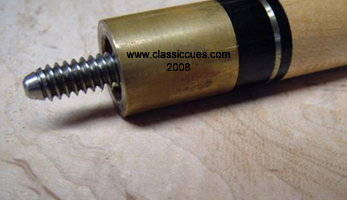 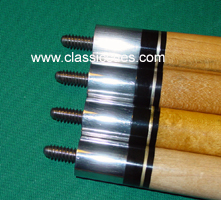 |
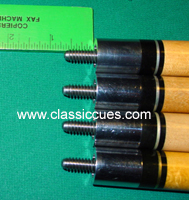 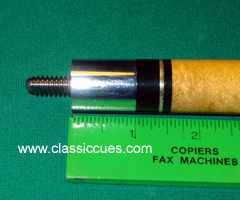 |
THE FOREARM: The distance between the top of the joint and the top of the wrap varies beteween 11 1/4" and 12 1/2".
George Balabushka utilized 4 different forearms; Brunswick Titlists, Burton Spain, John Davis and Gus Szamboti.
The majority of these were 4 color veneers and he built a small handful of 5 color veneer blanks supplied by Burton Spain and John Davis.
The prong wood could be oak, mahogany, rosewood, maple or ebony. Georges early cues were Brunswick Titlist conversions. In the mid 1960's he began using Burton Spain blanks, in 1970 John Davis blanks, and in the early (approx. 1972) 1970's began using Gus Szamboti blanks.
As George added new sources for blanks he still continued to use the others. There are date overlaps between forearms. So you could have a 1973 Titlist, or 1974 Burton Spain. |
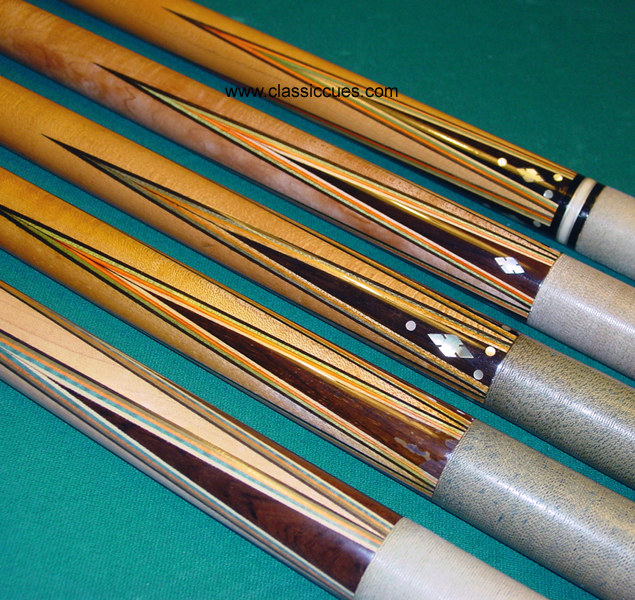 |
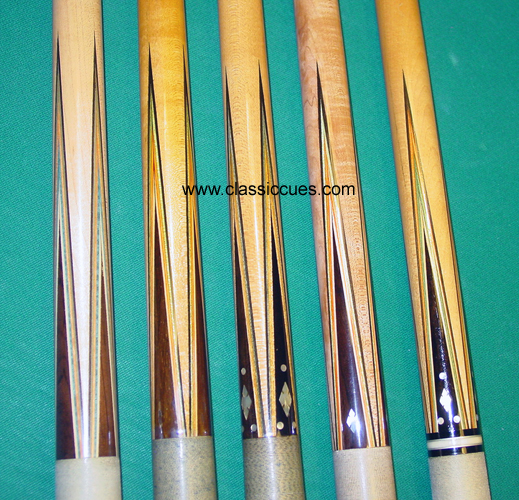 |
THE WRAP: The length of the wrap varies from 12 1/2 to 13 1/2 inches.
On Georges early cues the wrap was either nylon or silk. He then discovered Cortland #9 green spot irish linen and made that his wrap of choice.
On rare occasion he would do a leather wrap. George was considered the best "leatherman in the business", according to Jimmy Caras, and many other top professional players at that era.. I have seen very few examples of wrapless cues, one of which was carved. |
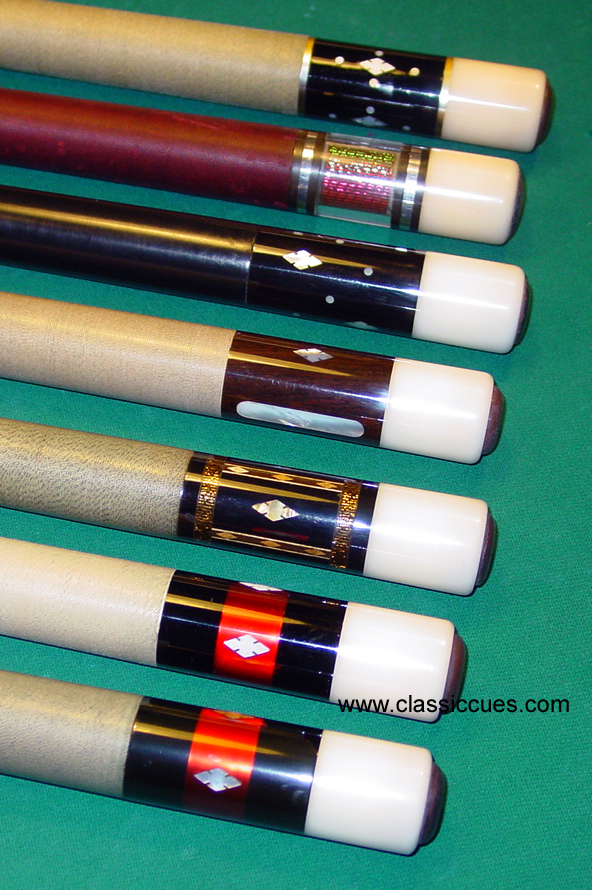 |
THE BUTTSLEEVE: The length of the backend varies from 2 1/4" to 2 3/4" inches.
Balabushka sleeves were built using plastics, acrylics, bakelights, clear windows,or hardwoods.
Although George was limited to mother of pearl dots and notched diamonds, he had the ability to take simple patterns and make them elegant.
George was also creative utilizing wood veneering as both inlays and ringwork in many of his early and later. cues.
Many of George's designs are timeless and still used today.
His typical delrin butt cap was roughly 1 1/2", |
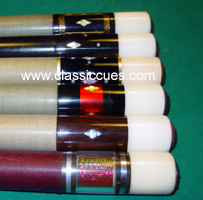 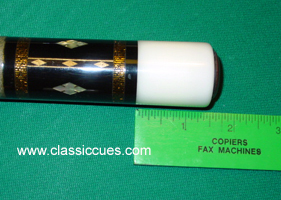 |
THE BUMPER: Balabushka used the reddish brown Brunswick rubber bumper which has become one of his trademarks.
As you can see in the picture, George traditionally wrapped them in masking tape. The weight bolt was customarily a 5/16 x 18 screw and a small socket head cap screw held the rubber bumper securely in place.
When you remove the rubber bumper you should see a groove in the delrin around the perimeter which was created by the forstner bit. There should be an insert of phenolic, brass, or aluminum for the weight bolt to thread into.
Early cues are more difficult to determine and need a very sure set of eyes. |
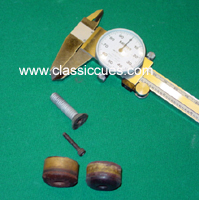 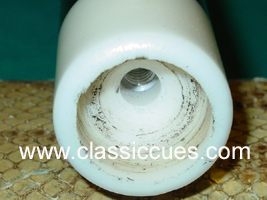 |
|
| |
|
| |
|
| |
|
| |
|
| |
|
| |
|
| |
|
| |
|
| |
|
| |
|
| |
|
| |
|
| |
|
| |
|
|
|
|
|